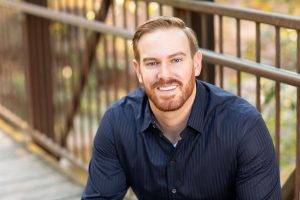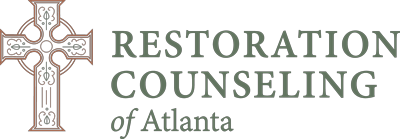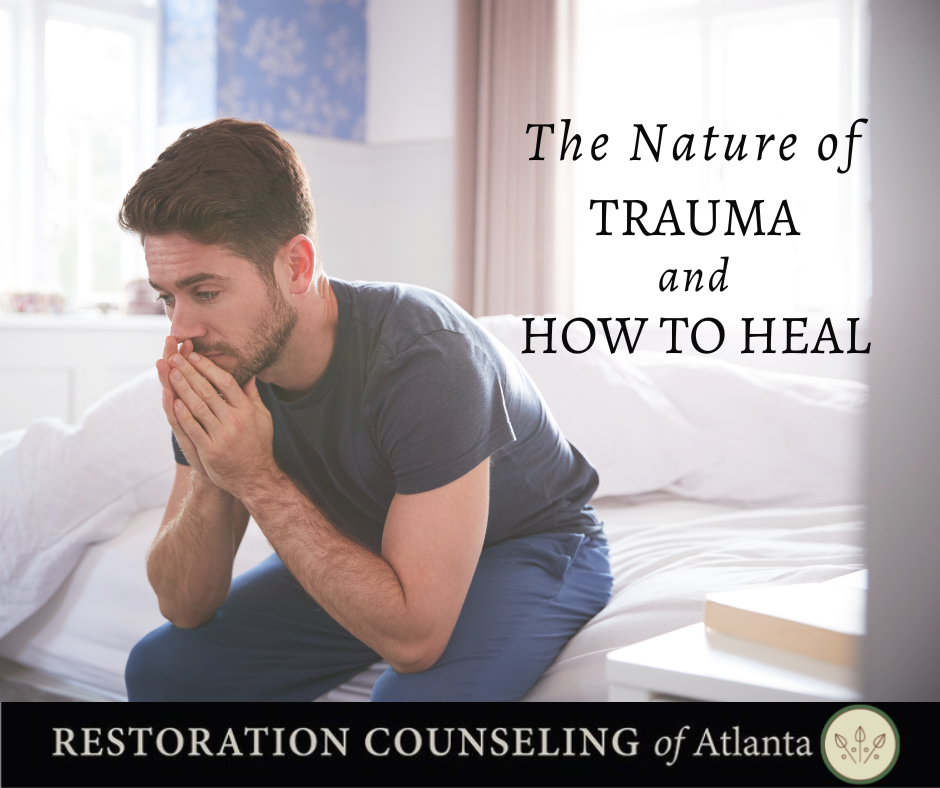Trauma: We all experience it.
“I think our capacity for wholeheartedness can never be greater than our willingness to be broken-hearted. It means engaging with the world from a place of vulnerability and worthiness.”—Brene Brown
Have you ever said:
- “I feel like I’m the only one struggling with this; everyone around me seems to have it together.”
- “I’m not much of a feeler or have as many emotions as other people.”
- “I practically had the perfect childhood. My parents loved me, sure they weren’t perfect, but I have nothing to complain about compared to others.”
- “I don’t remember certain periods of my life, especially my upbringing.”
- “They did the best could, and so did I.”
- “Why do I still struggle with this?”
- “I’m so stupid; how could I have let that happen?”
- “It wasn’t that bad, it could’ve been worse.”
- “I’m not that deep of a person.”
- “The past is the past, there’s no changing it. All you can do is move forward.”
- “Just give it to God and let it go.”
I can recall saying all of the above. I left these questions and statements unanswered. This limited my insight into my story and discovery of who I am. It dismissed the cuts and gashes I received and gave and invalidated the actions of myself and others. Unfortunately, because we are all imperfect, it is impossible to have a perfect childhood and life this side of heaven.
From unconscious, hidden ways to conscious, blatant ways, we have all been hurt in the context of our family, friends, work, school, church and by people in general. Therefore, the question is not, have you been hurt in a relationship, but have you identified or ignored the hurt? Have you named the truths and lies your trauma created in your story and learned how to live in the world and with God? Have you gotten to know yourself within your story?
The Nature of Trauma
Some experts say trauma is only what physically happens to a person, while others say witnessing and imagining hurtful events can be just as traumatic. Other experts say trauma is not what happens to the person but what happens afterward. For example, a child wakes from a horrific nightmare with no one to comfort them. Alternately, a child who has the same nightmare but is comforted by their parents may not be as traumatized.
Experts debate whether it is the neurological development of the person and interpretation of danger or tolerance that makes experiences traumatic. Consider a child playfully holding a tarantula; meanwhile, an adult holds the same tarantula and panics.
I believe all the debates combined create an accurate definition of trauma. However, they miss the intrinsic nature of it. They don’t address what has been disrupted and broken by sin.
A Biblical Perspective of Trauma
A biblical perspective can be more helpful in naming the nature of trauma. Put simply, trauma is anything less than love. The nature of trauma is like lightly piercing a delicately balanced glass panel. Within microseconds of each crack of glass affecting another, the whole panel becomes shattered. Similarly, the smallest hidden (“papercut/splinter/small T”) traumas, as well as the most severe and overt (“big T”) traumas, create an unconscious and conscious breaking of the soul. Dan Allender excellently describes trauma as any event that violates who you are (your personhood and your dignity) and who you are meant to be as the image of God.[2]
Scholars debate when the exact moment sin and trauma entered Adam and Eve. Was it when they doubted God before they ate of the fruit of the tree of knowledge of good and evil, or was it the pride that they wanted to be God? However, it is the covert trauma agreement that they made with Satan that shattered the perfect unity between them and God. A lie is an accusation, and an accusation is a naming of what is untrue (ex., Screw you, you are too much, why can’t you be…?) which ultimately harms and destroys your identity, known as a curse.[3]
Therefore when Satan said to them in Genesis 3: 4-5, “You will not surely die. For God knows that when you eat of it, your eyes will be opened, and you will be like God, knowing good and evil.” Satan, in his narcissism and trauma, tried to curse Adam and Eve by using a lie (they will not die) mixed with a truth (their eyes will be opened). If Adam and Eve did not agree to that curse but rebuked and set boundaries with Satan as Jesus modeled in Matthew 4, perfect unity with God and each other would remain. However, it is in believing, or having the tiniest faith in the lie, that the curse becomes true.
Our Belief System
Our belief system is altered by accepting that “truth” and doubt and confusion actualize, creating more trauma and betrayal, disconnection, and distrust of ourselves and others. Betrayal is the breaking of an implied or stated commitment of care.[4] So when Adam and Eve abandoned God by breaking the covenantal commitment and attachment with Him, the loss of purity of love, purity, unity, and security in their vulnerability, joy, innocence, and provision is horrific. That is why anything less than unconditional love is traumatic.
Finding Protection
The next step in the nature of trauma is finding protection. We often self-protect by selfishly and unconsciously coping with discomfort. Our unconscious defense mechanisms cope through trauma vows of “I will always/I will never….in order to….” and “I will have to…in order to get love/not have pain”. Not all defense mechanisms are bad—they serve a monumental purpose in keeping us safe. However, when our defenses keep us independent and unloved by ourselves, others, and God, it is hard to receive care and support that we all intrinsically need. This keeps us from who we are and the life God invites us to live and depression, unworthiness or shame, and an egotistical false self can all develop within us.
Hypothetically, even if just one human ate of the tree, it would still be shattering because we are all equal image-bearers of God. When one human self-protects through blame-shifting, hiding, objectifying, and other sinful ways, their actions verbally and nonverbally communicate a distrust in God and humanity. This indicates a belief that God is not a good God anymore and that they are more important. They believe they are on their own to fend for themselves.
By self-protecting, the nature of their actions communicates their needs are the most important and need to be met first, which creates belief systems of entitlement and narcissism that also establishes shame or contempt within that person. That person intrinsically knows every human is equal and an image-bearer, but they have this new goal of selfishness that is at war within themselves, affecting all of humanity.
The betrayal of trust within themselves and with others festers, creating a fear of disconnection and abandonment, leading to more distrust, anger, isolation, blame, deflection, and objectification of themselves and others. That desire to meet their needs first and foremost shatters, hence the blame-shifting cycle from Adam and Eve. Even if that person and all of humanity heal from that event, the trauma(s) are imprinted within our genetics, leaving a remembrance of the possibility of it happening again, and purity is not constant anymore. Therefore, every one of us is shattered. Some people are traumatized more severely than others, but even one shattering unconsciously and consciously creates defense mechanisms that can hinder who we are made to be.
“Is it really necessary to explore and name how I’ve been hurt?
It’s essential—within our wounding, therein the answers lie. The answers include who we are, our strengths, gifting, passions, needs, and desires that give us life. These are things that we may have given up on or been distracted from in our state of self-protection. Similar to accumulating wreckages, whether a light scrape or dent to the totaling of a car, if you do not tend to what has happened to your body and heart, it will begin adding up. Then the original function of you and how you operate will be suppressed. Another example is the use of hundreds of muscles in our body. If one is not flexible or impaired, it becomes weak, and other muscles must find different functioning and strength to accommodate.
Therefore, in naming our trauma(s), we can see what muscle was injured and the muscles surrounding it that adapted. Often, within naming the injury of our trauma(s), we feel the pain. However, we also begin gaining insight into the fact that there are the muscles of needs, passions, wisdom, and love underneath that are restorative. Your wounds are not all your fault, but your healing is your responsibility.
The Healing Process
“What You Don’t Transform, You Transmit”
- “There are two possibilities why your memories of childhood are so hazy,” I suggest to people. “Either nothing happened worth remembering, or too much happened that may be hurtful for you to recall.”—Dr. Gabor Matè
- “Trauma needs a witness, but so does joy.”—Dr. Jon Ebert
- “The catastrophe you fear will happen has, in fact, already happened” –Donald Winnicott
- “When you don’t realize that evil has a voice and speaks to you regularly, the accusations won’t feel like accusations at all—they will simply feel like truths that your heart knows.”—Adam Young
The quotes above name the nature of trauma that our bodies react to. The natural tendency when naming our hurts is to avoid comparing our story to someone else’s, but comparison can cripple you, and “. . . is always the realm of evil. The more subtle the story, such as the constant interruption, advice-giving, or lack of engagement, the more Satanic. The harder it is to see the dynamics of your image shattered and violated.” [5] My invitation to you is not to compare yourself and your story to others but compare it to what you are meant for and what you were meant to know in the fullness of God’s delight and God’s honor in Eden.[6]
Face the Hurt
If you are having a hard time naming your hurts, it might be helpful to read my article series on Relational Justice (Part One and Part Two) to name what the subtle injustices might be for you. It usually starts with the people who are closest to you, namely your parents, who are called by God to be the presence of who God is. Every parent is meant to offer a taste of who God is[7]. But, with sin, parenting becomes an impossible but responsible task that can create a sense of helplessness for the parent.
When we feel helpless, we revert back to what was “caught (modelled), not taught.” If you are a parent reading this, I invite you to focus not on ways you have hurt your children but on how your parents have hurt you. Consider how you are transmitting the same hurt to those closest to you because the greatest gift you can give is a present and attuned self. If you are not a parent, I encourage you not to blame and accuse, but with openness, acknowledgment and conviction, name the hurts you experienced from your parents or those who were your role models.
Begin Healing by:
- Naming the verbal and nonverbal traumas, accusations, agreements and vows, trauma roles, and beliefs about yourself and life. Process your story with the help of a trauma therapist using trauma therapies such as Narrative, EMDR, IFS, Radically Open-DBT, Somatic Experiencing, AEPD, EFT, or Experiential therapy.
- In a safe, resourced, supportive framework, reexperience your trauma by witnessing it and identifying the burdens that your body is carrying.
- Attune to your body and younger self within your trauma.
- Identify the needs and desires that were suppressed, and redeem your trauma through somatic enactment or visualization in meeting those needs
- Release burdens physically or visually.
- Invite and integrate character qualities, reclaim identity with yourself and God.
- Continue to invite and integrate character qualities, and reclaim identity with yourself and God at least daily to continue to gain attunement with God, self, and others.
- Share your story, as well as check in weekly with someone close to you.
Often, in guiding clients through their healing process, they can redeem what they realize they suppressed of the wonderful strengths and desires that were there. These might include such things as perseverance, humility, honesty, vulnerability, clarity of truth, and awareness. They can reclaim feelings within their bodies, embrace the goodness of their sexuality, exercising their choice and voice in confidence. These things happen with grace, love, hope, resiliency, kindness, and gentleness. They can gain the ability to orient and balance themselves, to say “no” and “yes,” and to know their limitations. They can ask for help with confidence, attunement, and attachment to themselves, God, and others.
Throughout the process of healing from trauma, clients often say, “I went through it, I don’t want to go through it again, but I can…I didn’t know I had this strength and goodness within me; but I now have the ability to trust myself, God, and others more.”
See Part 2 of this series for additional information on the process of healing from trauma as an individual.

Written by:
Micah Mabe, MA MFT, APC
Roswell Location
micah@restorationcounselingatl.com, ext. 158
Micah comes from a Christian background and enjoys working with adolescents and families, and couples. His focus is coming alongside families, adolescents, and teenagers who desire help and resolution. His other focus is helping couples who want to understand better and love their partner to enhance their marriage. He also helps couples in conflictual relationships struggling with disconnection and isolation.
Resources
[1] Paulsen, S., & O’Shea, K. (2017). When there are no words: Repairing early trauma and neglect from the attachment period with Emdr therapy. Bainbridge Institute for Integrative Psychology.
[2] Allender Center at the Seattle School. (2022). Narrative Focused Trauma Care Level 1. Retrieved November 5, 2022, from https://courses.theallendercenter.org/courses/22-23-certificate-in-narrative-focused-trauma-care-level-i2/lectures/43088688.
[3] Young, A. (2021, January). Spiritual Warfare Exercises. Your Story and Spiritual Warfare.
[4] Allender, D. B. (2003). The healing path: How the hurts in your past can lead you to a more abundant life. [Audible audiobook]. Retrieved from http://www.amazon.com
[5] Allender Center at the Seattle School. (2022). Narrative Focused Trauma Care Level 1. Retrieved November 5, 2022, from https://courses.theallendercenter.org/courses/22-23-certificate-in-narrative-focused-trauma-care-level-i2/lectures/43088688.
[6] Allender Center at the Seattle School. (2022). Narrative Focused Trauma Care Level 1. Retrieved November 5, 2022, from https://courses.theallendercenter.org/courses/22-23-certificate-in-narrative-focused-trauma-care-level-i2/lectures/43088688.
[7] Allender Center at the Seattle School. (2022). Narrative Focused Trauma Care Level 1. Retrieved November 5, 2022, from https://courses.theallendercenter.org/courses/22-23-certificate-in-narrative-focused-trauma-care-level-i2/lectures/43088688. 34

